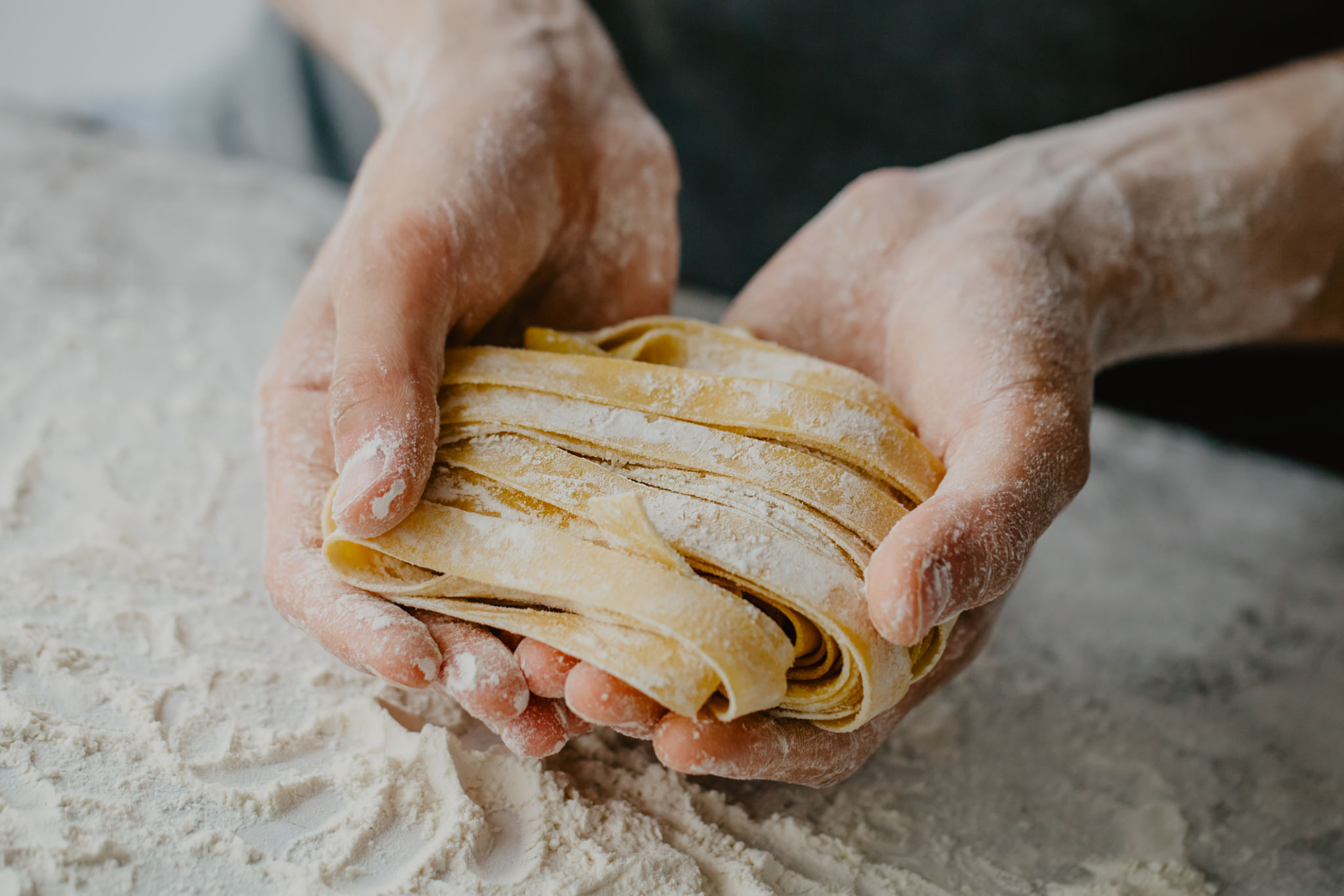The Ultimate Guide to Making Fresh Pasta at Home
Why Make Fresh Pasta?
Making fresh pasta at home is a culinary art that transforms simple ingredients into a delightful dish. The process is satisfying, and the taste of homemade pasta surpasses anything you can buy at the store. Not only is it fresher, but it also allows you to customize flavors and textures to your liking.
Whether you're planning a romantic dinner or hosting a family gathering, fresh pasta can be the star of the meal. It pairs beautifully with a variety of sauces, from classic marinara to rich Alfredo. Additionally, making pasta from scratch is a rewarding experience that connects you to traditional cooking methods.

Essential Ingredients and Tools
The great news is that making fresh pasta requires only a few basic ingredients: flour, eggs, and a pinch of salt. For a classic Italian pasta, use all-purpose or semolina flour for the best texture. As for equipment, a pasta maker is helpful but not necessary. A rolling pin and a sharp knife can do the job just as well.
Having a clean work surface is crucial. You'll need space to knead the dough and roll it out. A large cutting board or countertop works perfectly. If you opt for a pasta machine, ensure it's securely clamped to your work surface for stability.

Step-by-Step Pasta Making
Starting with the dough, create a mound of flour on your work surface and make a well in the center. Crack the eggs into the well and gradually incorporate the flour using a fork. Once combined, begin kneading the dough with your hands until it becomes smooth and elastic.
Let the dough rest for about 30 minutes. This resting period allows the gluten to relax, making it easier to roll out. Once rested, divide the dough into manageable pieces and start rolling it out as thinly as possible. If using a pasta machine, begin with the thickest setting and gradually move to thinner settings.

Cutting and Shaping Your Pasta
Once rolled out, it's time to cut your pasta into different shapes. Classic options include tagliatelle, fettuccine, and pappardelle. Use a sharp knife or a pasta cutter for even strips. For stuffed pasta like ravioli or tortellini, cut squares or circles and fill them before sealing the edges.
If you're feeling adventurous, try creating shapes like farfalle or orecchiette by hand. These unique shapes can add an extra touch of elegance to your dishes. Remember to dust your pasta with flour to prevent sticking as you cut and shape it.
Cooking Fresh Pasta
Cooking fresh pasta is quick and straightforward. Bring a large pot of salted water to a boil and add your freshly made pasta. Since fresh pasta cooks faster than dried pasta, it typically takes just 2-4 minutes until it's perfectly al dente.
Once cooked, drain the pasta and toss it with your choice of sauce immediately. Fresh pasta absorbs flavors well, so it's best served right after cooking to enjoy its tender texture and taste.

Pairing Sauces and Serving Suggestions
The beauty of fresh pasta lies in its versatility. It can be paired with a wide range of sauces, from simple garlic and olive oil to hearty Bolognese. For a light option, consider tossing it with lemon zest and herbs or freshly grated Parmesan cheese.
When serving, consider garnishing with fresh basil leaves or a sprinkle of crushed red pepper for added flavor and presentation. Serve alongside a crisp salad or crusty bread to complete the meal.
Storing and Preserving Fresh Pasta
If you have leftover fresh pasta, don't worry! You can store it in an airtight container in the refrigerator for up to two days. Alternatively, dry the pasta completely on a rack before storing it in airtight bags for longer shelf life.
Freezing fresh pasta is another option. Place the pasta on a baking sheet lined with parchment paper, freeze until solid, then transfer to freezer bags. This way, you can enjoy homemade pasta anytime you crave it.

Conclusion: Embrace the Art of Pasta Making
Making fresh pasta at home is an enriching experience that brings joy to both cooking enthusiasts and novices alike. With minimal ingredients and equipment, you can create delicious meals that impress friends and family.
So, roll up your sleeves and embrace this culinary adventure. The satisfaction of crafting your own pasta is unmatched, and you'll likely find yourself returning to this delightful kitchen tradition time and again.